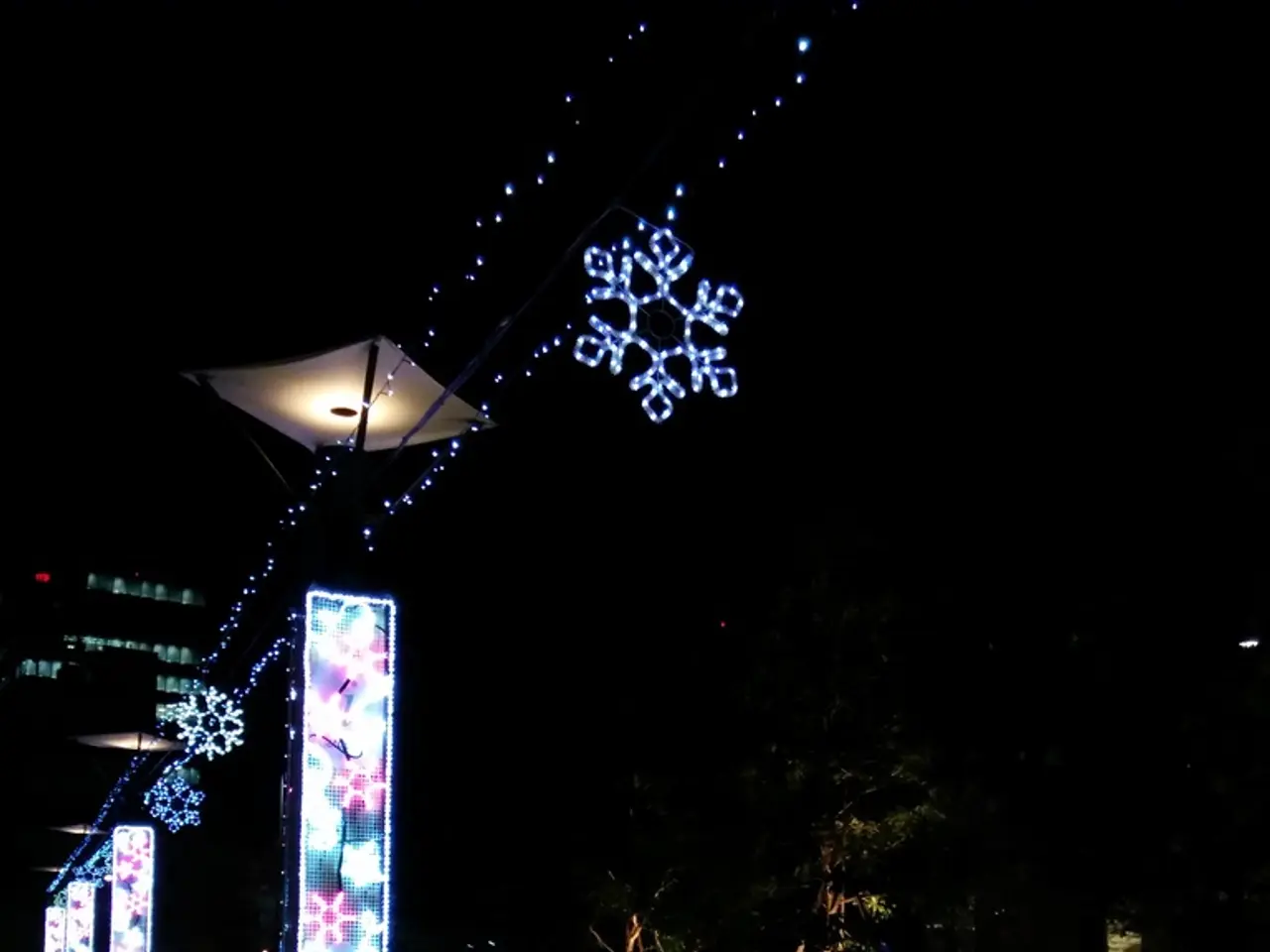Exploring Electricity's Past and Present: A Chronicle of Investigation and Innovation in Thunder and Lightning
In the annals of history, natural electrical phenomena such as lightning, thunder, and the auroras borealis were often regarded as divine or supernatural manifestations. These awe-inspiring displays, from the eerie glow of St. Elmo's fire on ship masts to the ethereal beauty of the Northern Lights, held a special place in maritime folklore, religious beliefs, and cultural narratives.
For centuries, the mysterious nature of these phenomena led many to interpret them as omens, signs of divine intervention, or even manifestations of divine wrath. For instance, in pagan and post-Classical religions, lightning was commonly viewed as a bad omen, a harbinger of doom. Among the Inuit, the auroras were seen as a sign of the presence of the dead, illuminating the path of new arrivals as they passed over into the heavenly realm.
However, as the scientific understanding of electricity began to develop in the 18th century, these mystical interpretations began to shift. Benjamin Franklin's famous kite experiment of 1752 proved the electrical nature of lightning, ushering in a new era of study and understanding of electrical phenomena from a natural philosophy perspective. This transition helped demystify these events, explaining thunder as the sound produced by lightning heating the air rapidly, and lightning as a massive electrical discharge.
In the early 20th century, further intricate scientific research deepened our understanding of atmospheric electricity and its broader implications. Kristian Birkeland's experiments, such as his "Terrella" demonstration, modeled how electric currents, now named Birkeland currents, flow along Earth’s magnetic field lines and produce auroras near polar regions. Although initially met with skepticism from the scientific community, satellite data in the 1960s and 1970s confirmed these theories, illustrating the electric nature of phenomena like the aurora borealis and their connection to solar wind and Earth’s magnetosphere.
This evolving scientific explanation changed cultural narratives around these phenomena from fear and superstition to appreciation of complex natural processes. Yet, some cultural and religious interpretations remain, enriched by this deeper knowledge, blending wonder at nature’s power with scientific insight. As the study of plasma and electric phenomena continues, it also influences philosophy and cosmology, suggesting a universe more interconnected through electromagnetic forces than earlier gravity-centered models had implied.
The wonder of electricity was not confined to atmospheric phenomena. Michael Faraday, a key scientist in the study of electricity, saw it as a manifestation of God's natural laws. In his 1837 book on electricity, William Leithead took scientists to task for rhapsodising and forgetting "the sober language of philosophy". Even after the scientific discoveries of the 18th century, the idea that lightning was a manifestation of God's power remained widespread.
Arctic explorers who witnessed the Northern Lights often found language inadequate when trying to convey this extraordinary phenomenon. The terror, havoc, and destruction wrought by lightning strikes have been popular subjects for artists, as were the sublime emotions the phenomena provoked. Many 18th and 19th-century artistic representations of thunder, lightning, and auroras reflected this awe and fear, from the trope of lightning in Gothic horror art and literature to the mythical, almost superhuman depictions of Benjamin Franklin.
In conclusion, the understanding of electricity and atmospheric electrical phenomena has shifted dramatically from mystical omens and divine acts to empirical science explaining their physical causes. This transformation has not only reshaped human cultural and religious conceptions but has also enriched scientific and philosophical perspectives. As we continue to explore and understand the intricacies of these phenomena, we are reminded of the interconnectedness of our universe and the awe-inspiring power of nature.
[References] [1] Wellcome Collection. (n.d.). The northern lights. Retrieved from https://wellcomecollection.org/works/x2v9g65r [2] Wellcome Collection. (n.d.). Electricity. Retrieved from https://wellcomecollection.org/themes/fq3z8qhg [3] Wellcome Collection. (n.d.). Benjamin Franklin. Retrieved from https://wellcomecollection.org/themes/h2x96g4w [4] Wellcome Collection. (n.d.). Mikhail Lomonosov. Retrieved from https://wellcomecollection.org/themes/x2v9g65r [5] Wellcome Collection. (n.d.). Robert Harrington. Retrieved from https://wellcomecollection.org/themes/h2x96g4w [6] Wellcome Collection. (n.d.). Max Raebel. Retrieved from https://wellcomecollection.org/themes/h2x96g4w [7] Wellcome Collection. (n.d.). Thomas Milner. Retrieved from https://wellcomecollection.org/themes/h2x96g4w [8] Wellcome Collection. (n.d.). John Freke. Retrieved from https://wellcomecollection.org/themes/h2x96g4w
- The shift in scientific understanding of electrical phenomena, such as thunder, auroras, and lightning, during the 18th and 20th centuries, resulted in a transformation of cultural narratives and perceptions from divine omens to natural processes in fields like science, technology, and education.
- In the realm of medical-conditions and lifestyle, the scientific exploration of electricity has intertwined with the understanding of human health, influencing the development of various diagnostic tools, treatment methods, and even cosmetic technologies.
- The entertainment industry has long been captivated by the allure of electrical phenomena, employing them as key elements in films, anime, and video games, often to create immersive and awe-inspiring digital experiences.
- With the advent of space-and-astronomy, scientific discoveries unveiled the fact that electric phenomena are not unique to Earth but also occur in other celestial bodies, providing new insights into the universe's electromagnetic forces and their implications for general-news stories about cosmic events.




